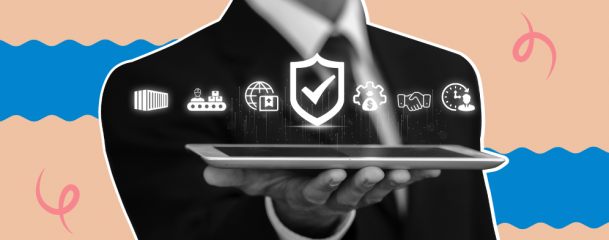1. Benefits of a Smart Office
Different smart office ideas can be applied to solve diverse workplace challenges. If you’re searching for reasons to update your office, consider these five key benefits of bringing your workplace into the 21st century.
1.1. Enhance Employee Productivity

Smart office apps can reduce the time employees normally spend on administrative tasks, freeing them up to focus on their core responsibilities or the parts of the job they enjoy most. The smart office concept states that numerous pieces of software exist that can make collaboration easier, such as Zoom or Slack, resulting in a more productive team dynamic and enabling hybrid or remote working. Additionally, sensors and software can be installed to track what resources staff use most, which can lead to reduced operational costs.
1.2. Higher Employee Retention
Employee retention is a serious concern for companies at the moment, especially when some research suggests that as many as 31% of people experience extremely high stress at work. One way to avoid resignations is to ensure the workplace is as comfortable as possible, utilizing smart office features such as relaxation rooms and modern furniture, including standing desks and sleep pods. Hygienic surroundings, well-lit workspaces and sufficient ventilation are all likely to encourage valuable skilled staff to stay.
1.3. Reduction in Energy Cost
From an environmental perspective, smart office systems can help companies reduce their carbon footprint and improve energy efficiency. This might be achieved through smart office tools like automated temperature controls, which can be retrofitted into existing systems, or employing better building materials. Initiatives like these reflect well on the company’s dedication to ESG and also connect to higher employee retention - more than 50% of respondents in one survey said sustainability was an important factor when choosing which company to work for.
1.4. Improvement in Health and Hygiene of Workers
As we continue to recover from peak COVID, health and hygiene has never been higher on the agenda. Smart office equipment can help office managers keep on top of cleaning schedules as well as provide touchless solutions for common equipment: smart devices can be configured to allow access to buildings or even operate the coffee machine, all without direct physical interaction. Even more advanced systems can actually adjust lighting levels to create the impression of natural light, while infrared sensors can assess if a particular area of the office sees greater foot traffic and so needs to be cleaned more often.
1.5. Increase in Data Security
Companies today are engaged in a constant battle when it comes to cybersecurity, with the threat of data hacks and ransomware becoming increasingly commonplace. According to IT trade organization CompTIA, ransomware attacks grew by more than 40% during the pandemic. Smart offices can reduce the risk of losing control of employee data and confidential company information through state-of-the-art software.
2. 10 Must-Have Smart Office Features
Knowing where to start with your smart office upgrade might seem daunting, but smart offices don’t have to be complex to implement. Here are 10 must-have smart office features to consider as part of modernizing your workplace.
2.1. Collaboration Tools

Useful for productivity as well as employee retention, collaboration tools help a team to work more closely and cohesively. Some of the most commonly utilized today are video communication software like Microsoft Teams, Skype and Zoom, but they can also extend to web-based editing programs like Google Docs. Virtual whiteboards like Miro can add a visualization element to your company’s smart office apps suite, while project management software like Monday aids teams who need to keep on top of workflows.
2.2. Smart HVAC
An acronym for heating, ventilation and air-conditioning, HVAC solutions have always been a part of the workplace. Thanks to the internet of things (IoT), however, temperature control has become much more sophisticated, linking together hardware with wireless technology to enable optimized, automated office heating or cooling depending on season, time of day and weather forecast. If you need to manually adjust anything, these systems can also be connected to computers, tablets and smartphones.
2.3. Smart Office Accessories
Standing desks to combat sedentary lifestyles have been around for a while, but modern smart desks allow employees to adjust the height of their desk throughout the day and save their preferences at the push of a button. While it’s fairly common now to see desks with USB charging points, many also incorporate wireless charging pads. Other smart office examples of accessories include wireless charging desk pads that accommodate wireless keyboards and mouses, as well as phones with Bluetooth connectivity to do away with all the messy wires.
2.4. Smart Workplace Apps
There’s an app for everything these days, even in the workplace. At the most basic level, smart office apps can make life easier for employees by allowing them to more seamlessly reserve meeting rooms and make desk bookings in offices where there isn’t assigned seating. Removing the necessity for old-fashioned fobs by offering access control solutions tied to smartphones is environmentally friendly and more convenient, and you can also use workplace apps to encourage good-natured competition between teams with exercise challenges to improve physical health.
2.5. IoT Security Solutions

While the IoT comes with many benefits, it also poses unique security threats. Fortunately, there are a lot of smart office tools on the market today to combat these issues. Risk assessment tools, endpoint security such as antivirus programs, data encryption protocols and two-factor authentication are all available smart office solutions. These can help protect company and employee data, as well as prevent malware from being installed on computers, laptops and smartphones.
2.6. Smart Technologies to Prevent COVID-19
COVID-19 has given us all a unique appreciation of how easy it is to pass bacteria and viruses through everyday objects. Smart technologies such as touch-free coffee machines, touchless vending machines and sanitizer stations can help reduce infection risk and give employees peace of mind. Combine automatic doors with access control solutions for a seamless, tech-enabled workplace to fulfill your smart office concept design.
2.7. Proactive Maintenance of Different Systems
Rather than waiting for things to break down, make sure you have processes in place to monitor the different systems in the office. This could involve installing sensors to track potential faults in HVAC systems or having automated backup procedures. Having an in-house service desk means there is a dedicated team to stay on top of any problems that arise.
2.8. Use of AI for Administrative Task

No matter what your company does, there will be targeted software on the market to help automate administrative tasks. That could mean data analysis, invoice generation, newsletter creation or customer relationship management. Regardless, these pieces of AI software will remove the necessity for employees to get bogged down in repetitive admin, freeing them up for more essential and interesting tasks. Ultimately, this will benefit both productivity and job satisfaction.
2.9. Flexible Workplace
Take inspiration from the Danes and create a room filled with hygge. Providing a space for employees to chill out during breaks is good for wellbeing and can improve staff retention. These spaces can take many forms, from reading rooms filled with books, to lounge rooms with couches and a foosball table. Take a page out of Google’s book and install hammocks or sleep pods so staff can have a bit of shut-eye during the day – one study by the National Sleep Foundation found 40-minute naps improved productivity by 34%.
2.10. Smart Energy Usage

Help out the environment by improving energy usage as much as possible, thereby reducing your carbon footprint. While the initial thing to assess is overall building insulation, including making sure heat isn’t being lost through poor-quality windows, smart office apps can track electricity usage to help you identify areas that could be improved. Consider efficiency ratings when purchasing communal smart office equipment and install energy-efficient lights throughout the building. You can even take your office sustainability further by only purchasing soaps and other cleaning products that are certified eco-friendly.
3. FAQs
3.1. What are the steps to making the transition from a traditional to a smart office?
While you might want to implement all the smart office ideas listed above, it’s advisable to assess which ones are the most immediately important to your company. This will help you prioritize the process, rather than attempting to change everything simultaneously.
Measure the available space – having 20 relaxation rooms might seem like a wonderful idea, but the floorplan may not allow for such a luxury. There are also the ever-important budgetary considerations: how much money is available for your smart office transformation and what are the most expensive aspects of your smart office upgrade likely to be? IoT security solutions are likely to prove far more essential than standing desks, for example.
3.2. What are some of the best smart office ideas?
Some of the best smart office ideas include the automation of repetitive tasks and the installation of smart office furniture like standing desks.
 Interested in Virtual Team Building Events?
Interested in Virtual Team Building Events?





















